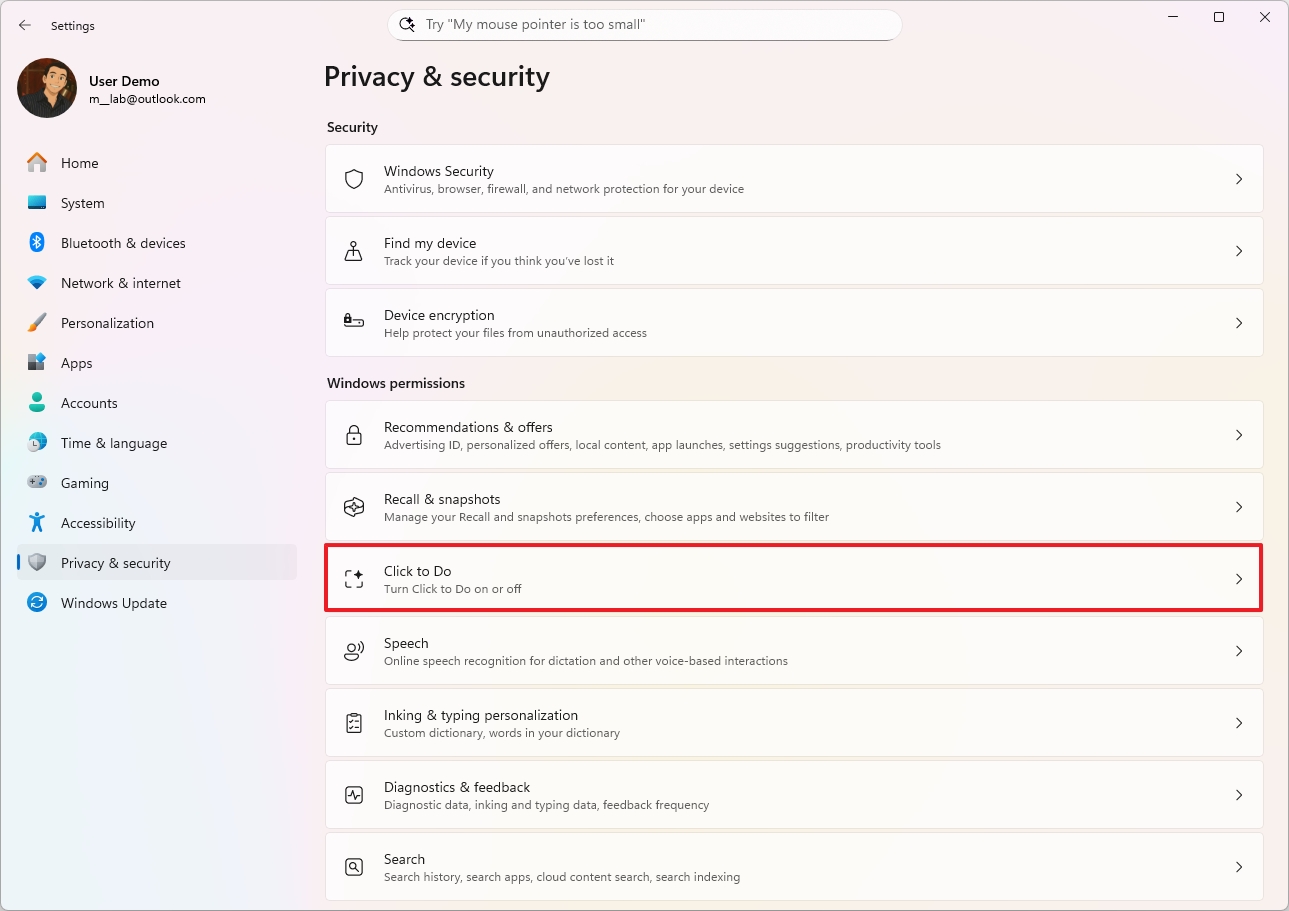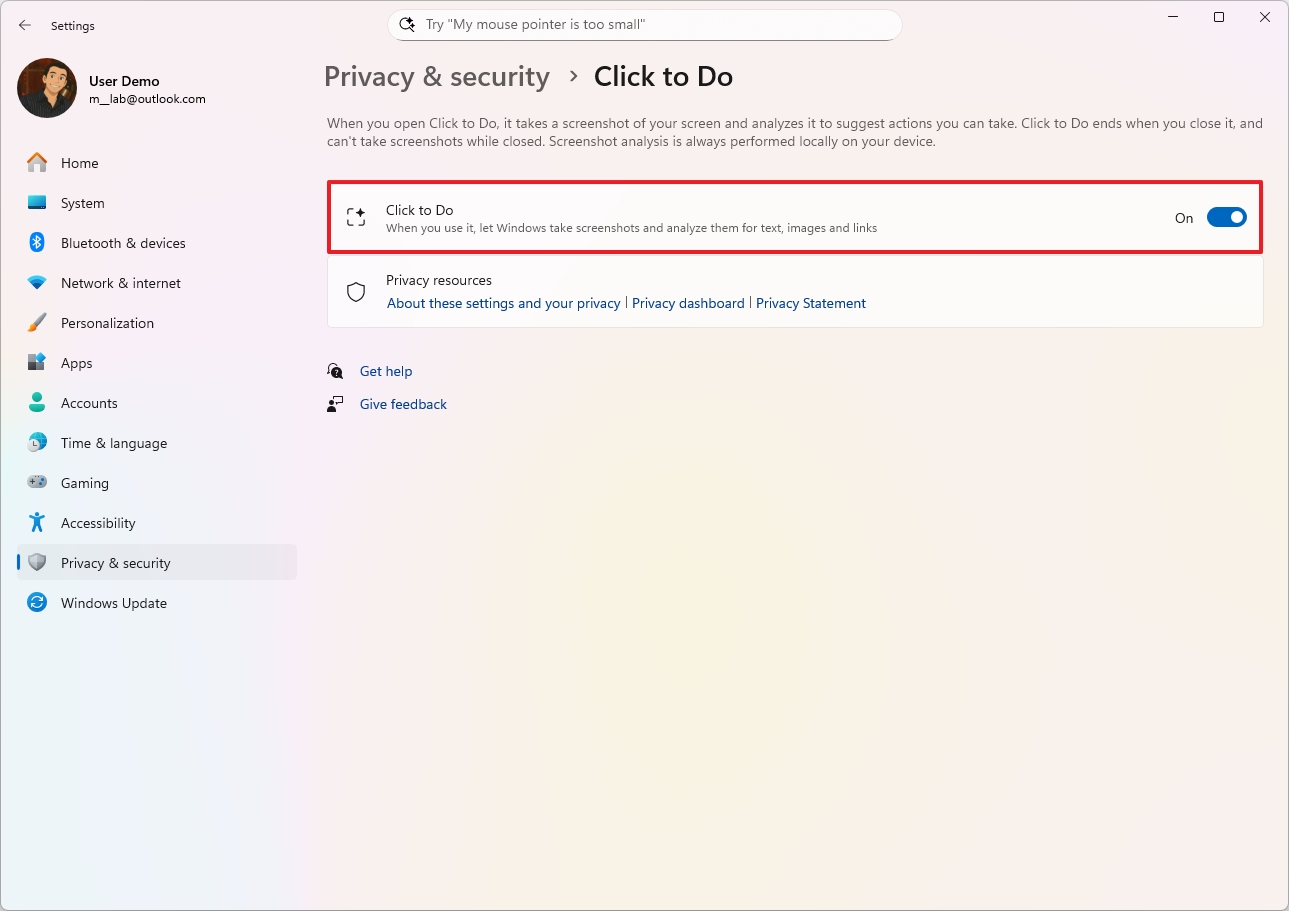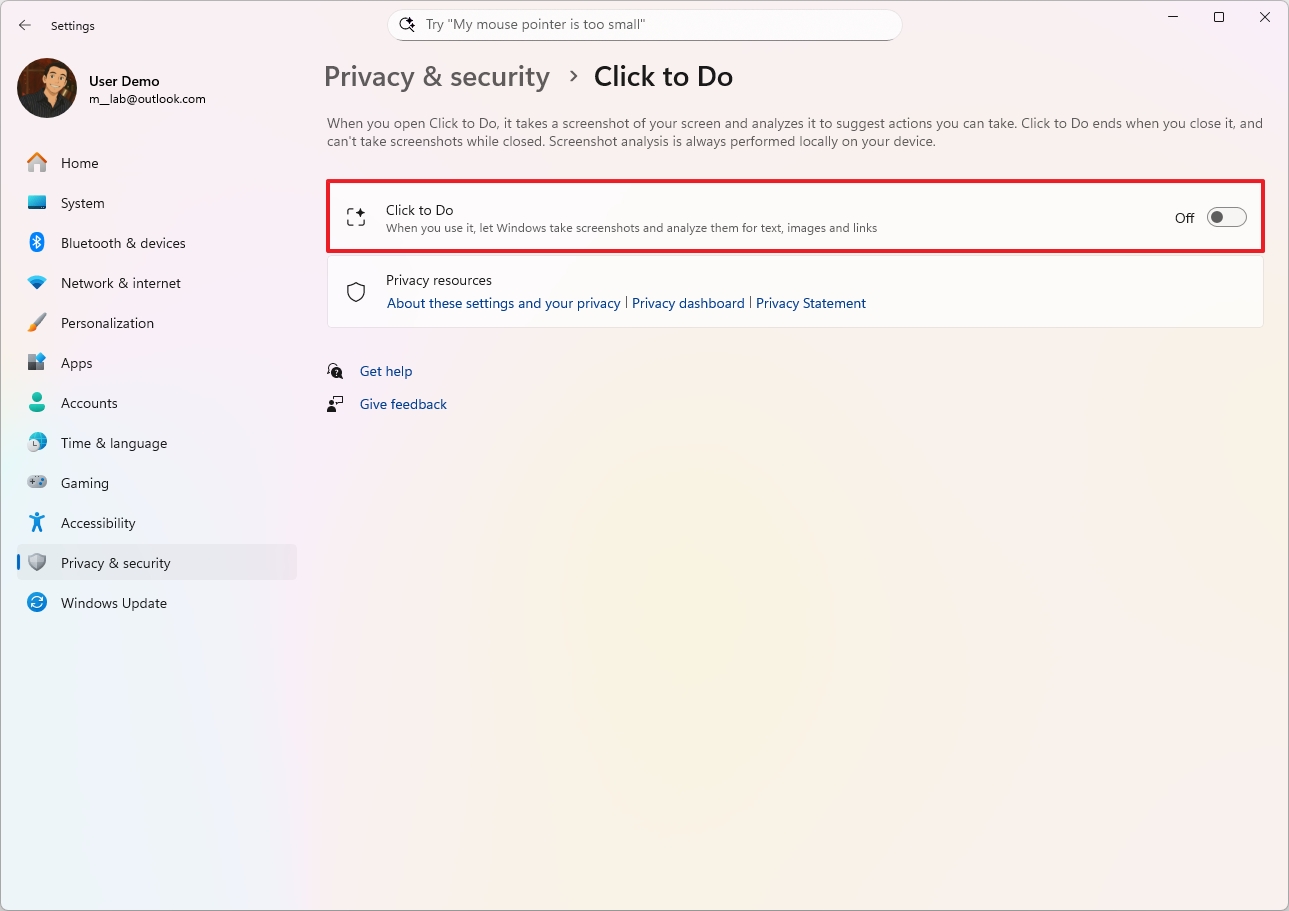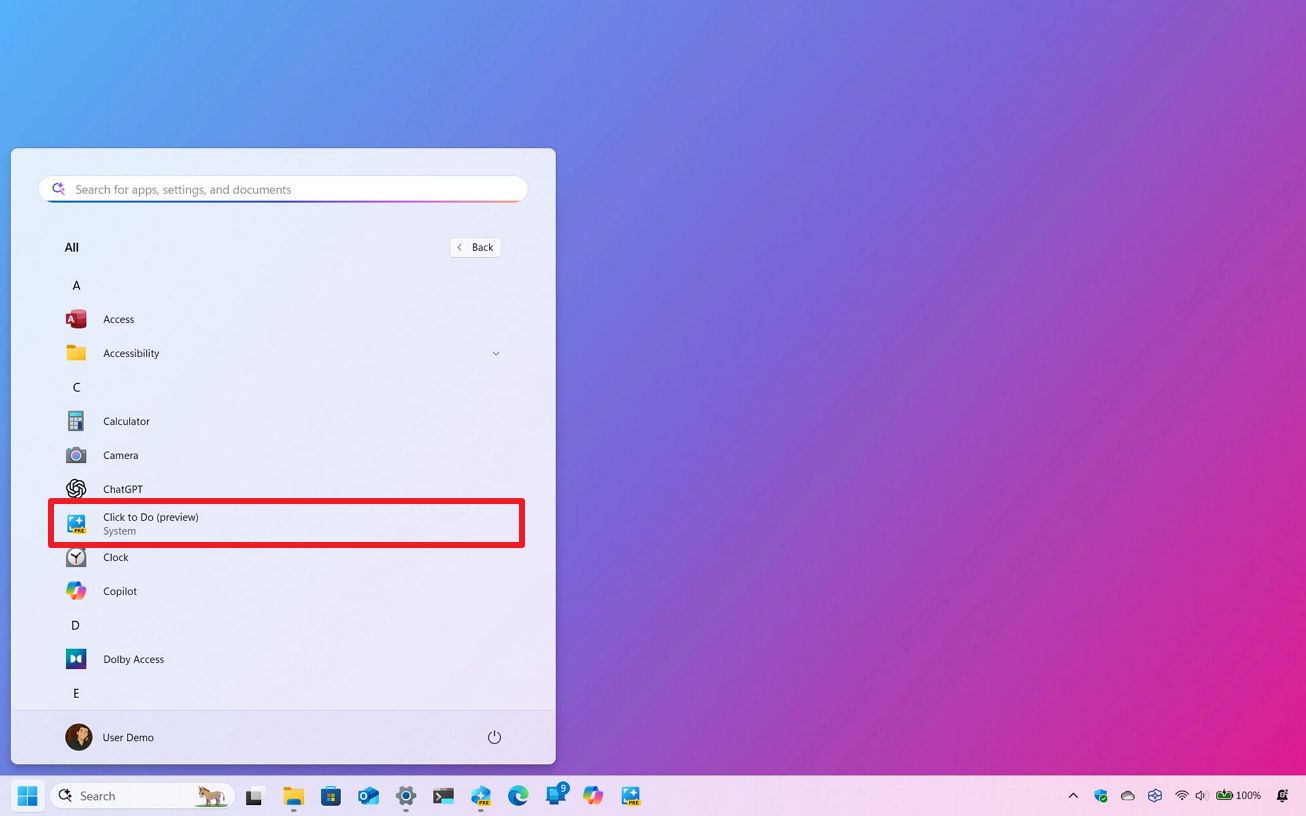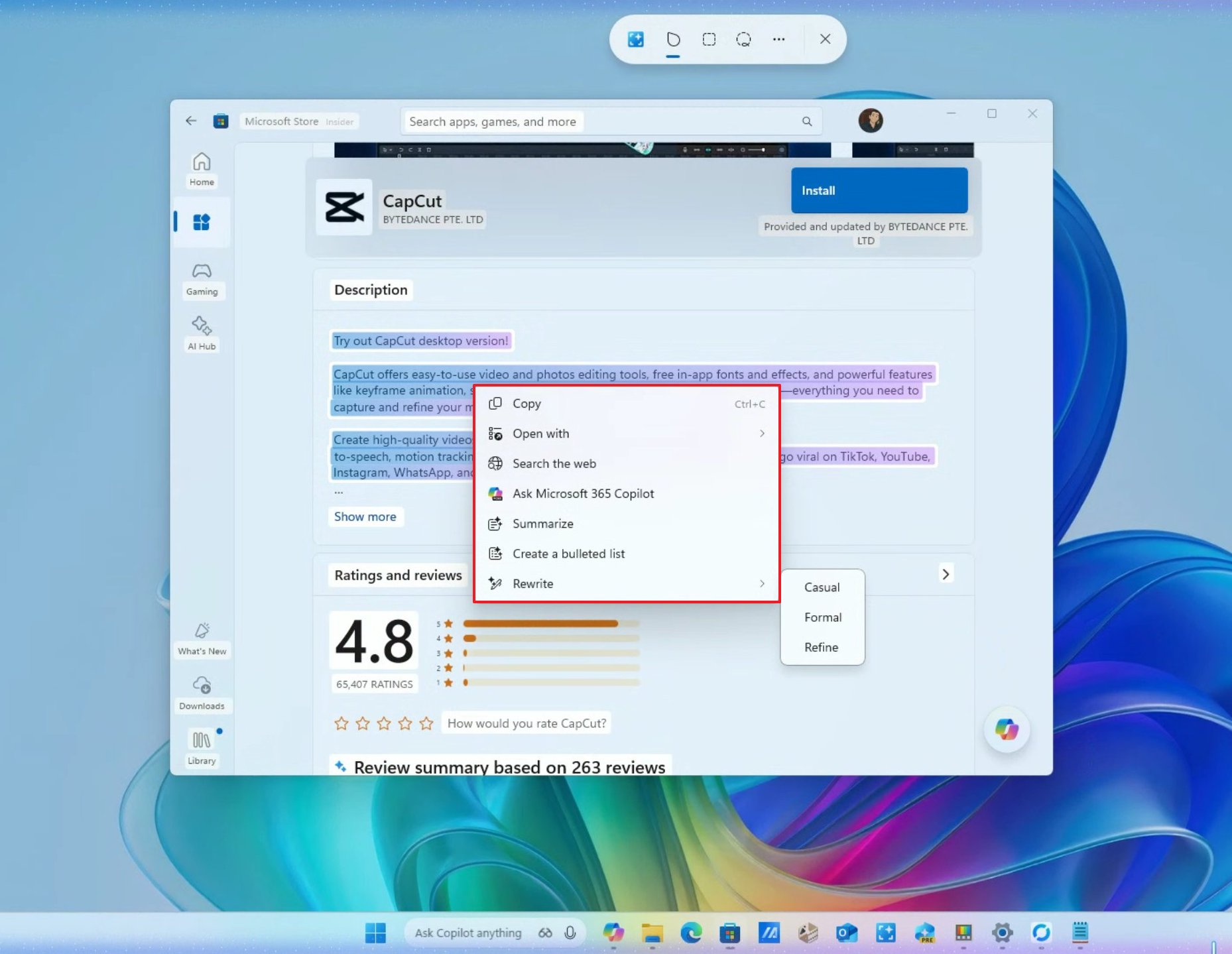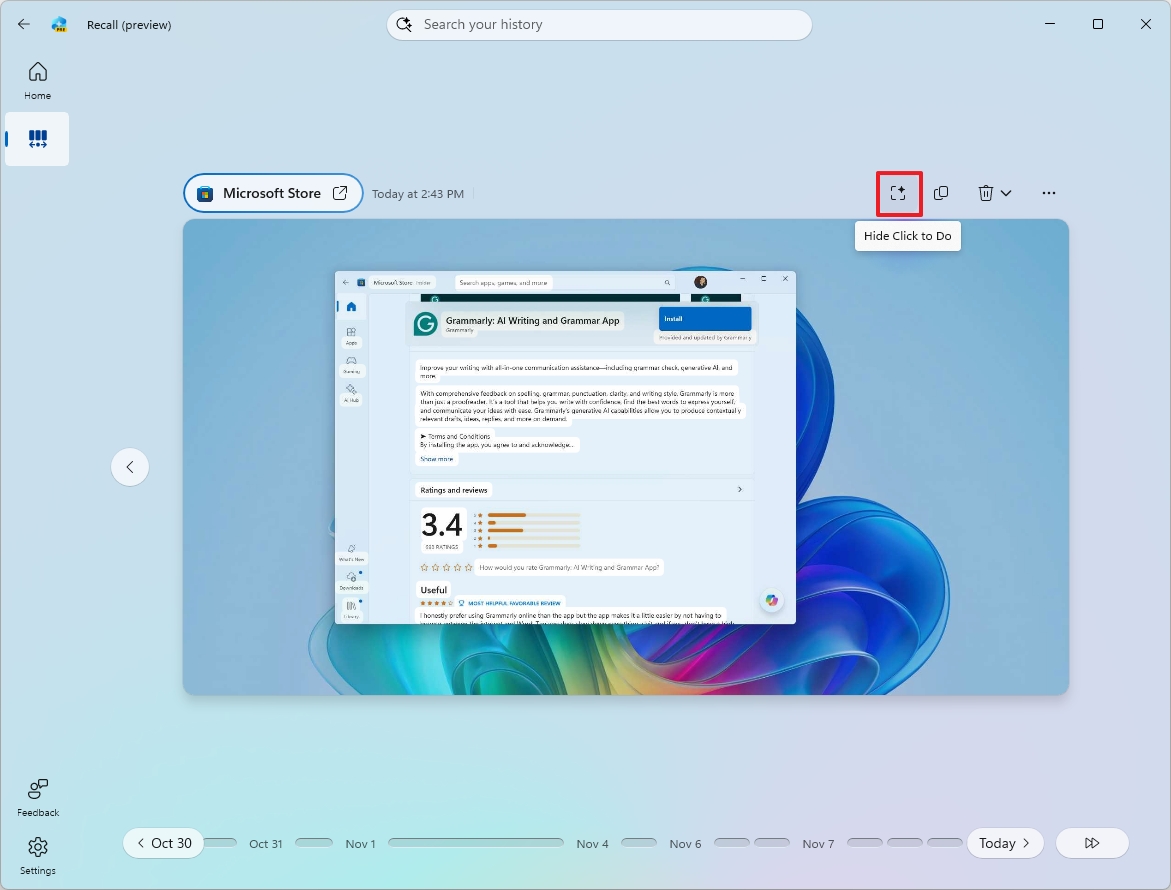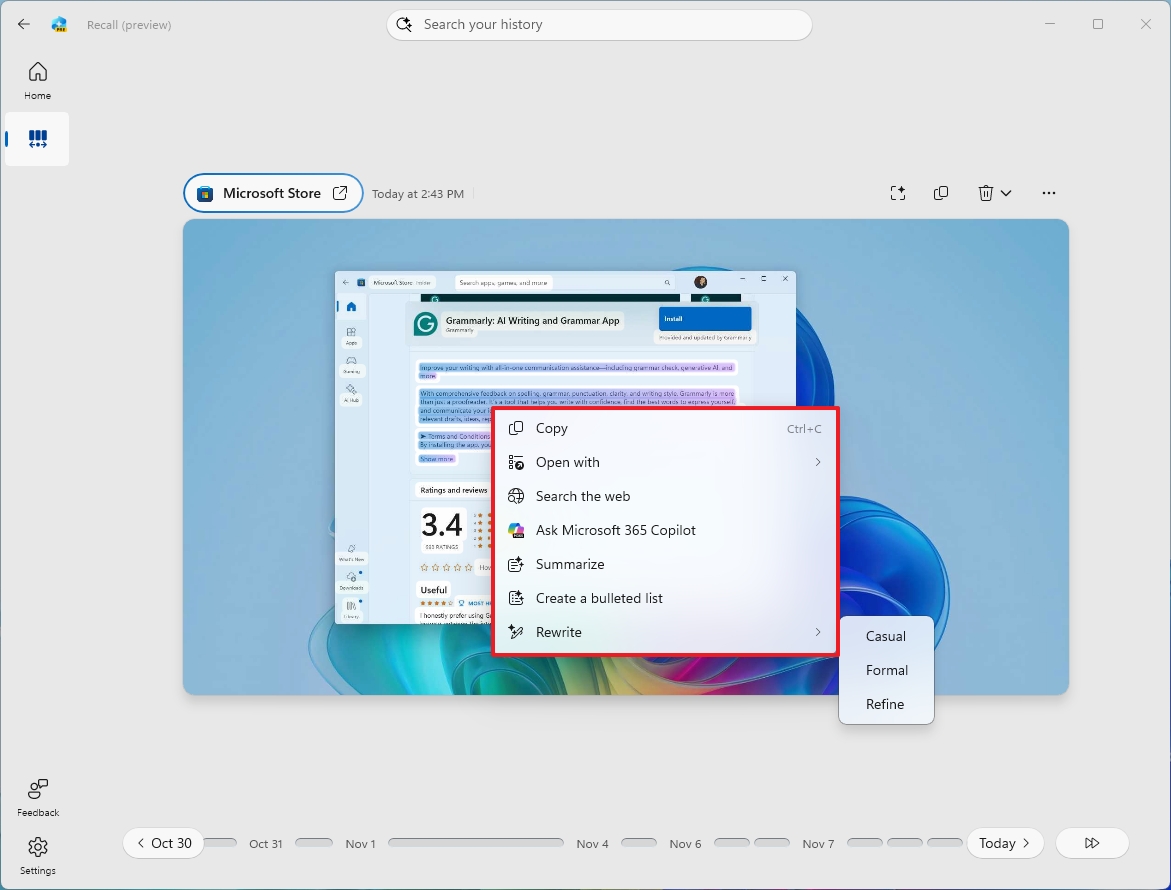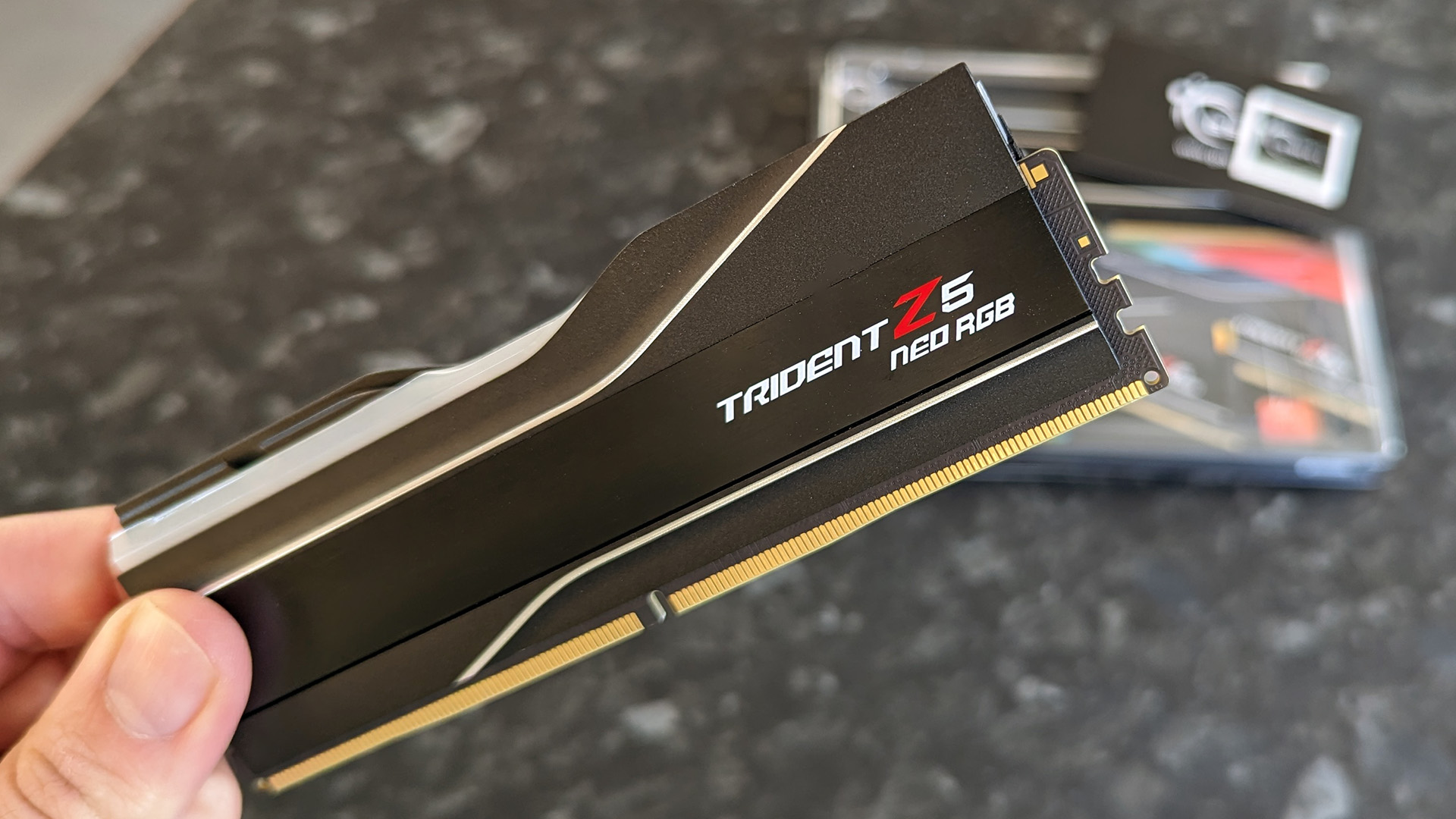What is Click to Do, and how do I use it? Explaining AI actions for Windows 11
Click to Do allows for quick tasks with anything that appears on the screen, and here's how to use it on your Copilot+ PC.
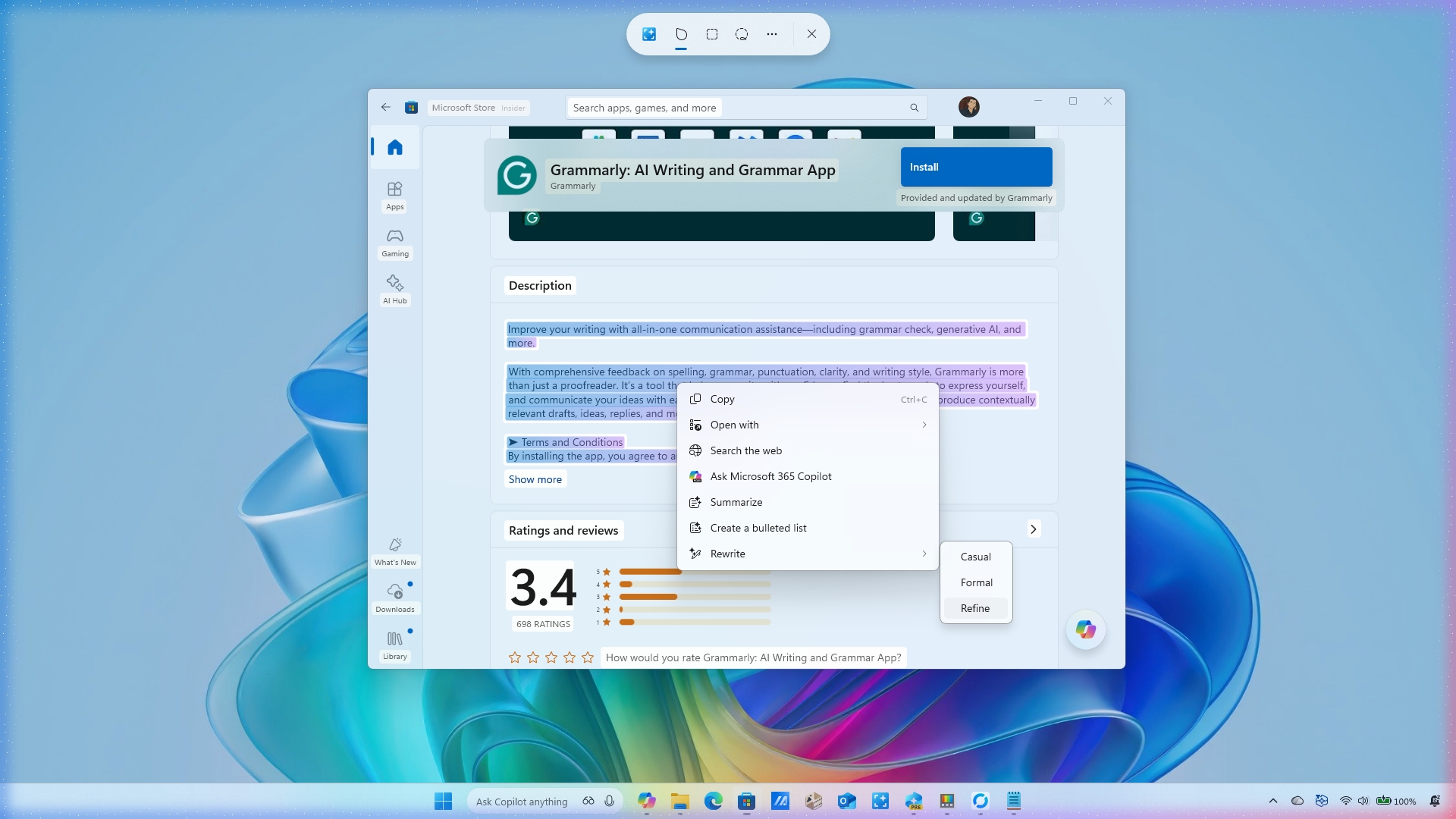
Click to Do is an AI-powered feature available exclusively on Windows 11 for Copilot+ PCs. It enables you to perform contextual quick actions based on the content displayed on the screen.
Despite the name, it's easy for some people to confuse this feature with "Microsoft To Do," which is a task management app, but the two are unrelated. "Click to Do" is part of Microsoft's on-device AI experience, while "Microsoft To Do" is a cloud-based productivity tool.
When using Click to Do, the feature takes a screenshot of your desktop and applies AI models to detect text and visual elements. This process occurs entirely on-device, ensuring your data stays private. The system does not analyze the content for meaning or send any information to the cloud during recognition.
Data may only leave your device if you initiate specific cloud-based actions. For example, if you choose to search the web, ask Copilot a question, or use any functionality that relies on cloud services, then that interaction may involve external data processing.
This feature is exclusive to Copilot+ PCs because it requires the onboard Neural Processing Unit (NPU) hardware found in the latest processors, such as the Qualcomm Snapdragon X Series, and those AI-enabled chips from AMD and Intel.
In this how-to guide, I'll explain the steps to get started with the Click to Do feature on Windows 11.
This guide has been updated to reflect the new changes available for this feature. If one or more functionalities are not available on your Copilot+ PC, consider that some features are still rolling out with the November 2025 Security Update, including Copilot prompt, unit conversion, and translation. Also, some functionalities are limited to specific markets or are reserved for organizations.
How to get started with Click to Do on Windows 11
On Windows 11, you can turn Click to Do on or off at any time and access the feature from the desktop as an app or a feature inside the Recall app.
All the latest news, reviews, and guides for Windows and Xbox diehards.
Enable Click to Do
To enable Click to Do on Windows 11, use these steps:
- Open Settings.
- Click on Privacy & security.
- Click the Click to Do page on the right side.
- Turn on the "Click to Do" toggle switch.
Once you complete the steps, you'll be able to access the feature through the dedicated app.
Disable Click to Do
To disable Click to Do on Windows 11, use these steps:
- Open Settings.
- Click on Privacy & security.
- Click the Click to Do page on the right side.
- Turn off the "Click to Do" toggle switch.
After you complete the steps, the feature as an app will turn off. However, the AI actions will continue to be available from within the Windows Recall app.
Open Click to Do as an app
To open Click to Do outside the Windows Recall feature, use these options:
- Windows key + left-mouse-click (shortcut).
- Windows key + Q (shortcut).
- Open Start, search for Click to Do, and click on the top result.
- Open the Snipping Tool, click on New, and click the Click to Do button.
When the app launches, it'll take a screenshot of the screen, and the Click to Do toolbar will appear at the top of the desktop.
Text selection actions
As you select some text and right-click the selection, you will find a number of AI actions, including:
- Copy.
- Open with.
- Search the web.
- Ask Microsoft 365 Copilot.
- Summarize.
- Create a bulleted list.
- Rewrite.
Also, depending on when you're reading this guide, you may find different AI actions. For example, if the device includes the Microsoft Reading Coach app, you can access the "Practice in Reading Coach" and "Read with Immersive Reader" features.
Other actions that Microsoft is working on include:
- Schedule a Meeting with Teams.
- Send a Message with Teams.
- Draft with Copilot in Word.
It's worth noting that you have to select at least 10 words and be signed in with your Microsoft account to access most actions with Click to Do.
Object selection actions
If you select an object from the image, you will have a different set of AI actions:
- Copy.
- Share.
- Save as.
- Open with.
- Ask Microsoft 365 Copilot.
- Describe an image on the screen.
- Visual Search with Bing.
- Blur background with Photos.
- Erase objects with Photos.
- Remove background with Paint.
Click to Do selection feature
Click to Do also includes new selection options (Freeform Selection, Rectangle Selection, and Ctrl + Click) available in the toolbar.

Freeform Selection lets you use your finger or a pen to draw around the items you want to select. On the other hand, the Rectangle Selection mode creates a rectangle selection.
Also, Ctrl + Click allows you to hold down the "Ctrl" key and click each item to select multiple entities across types, including text, images, and more.
Click to Do with Copilot
The Click to Do actions menu now also features a Copilot box that allows you to interact with the chatbot more quickly when working with a specific activity.
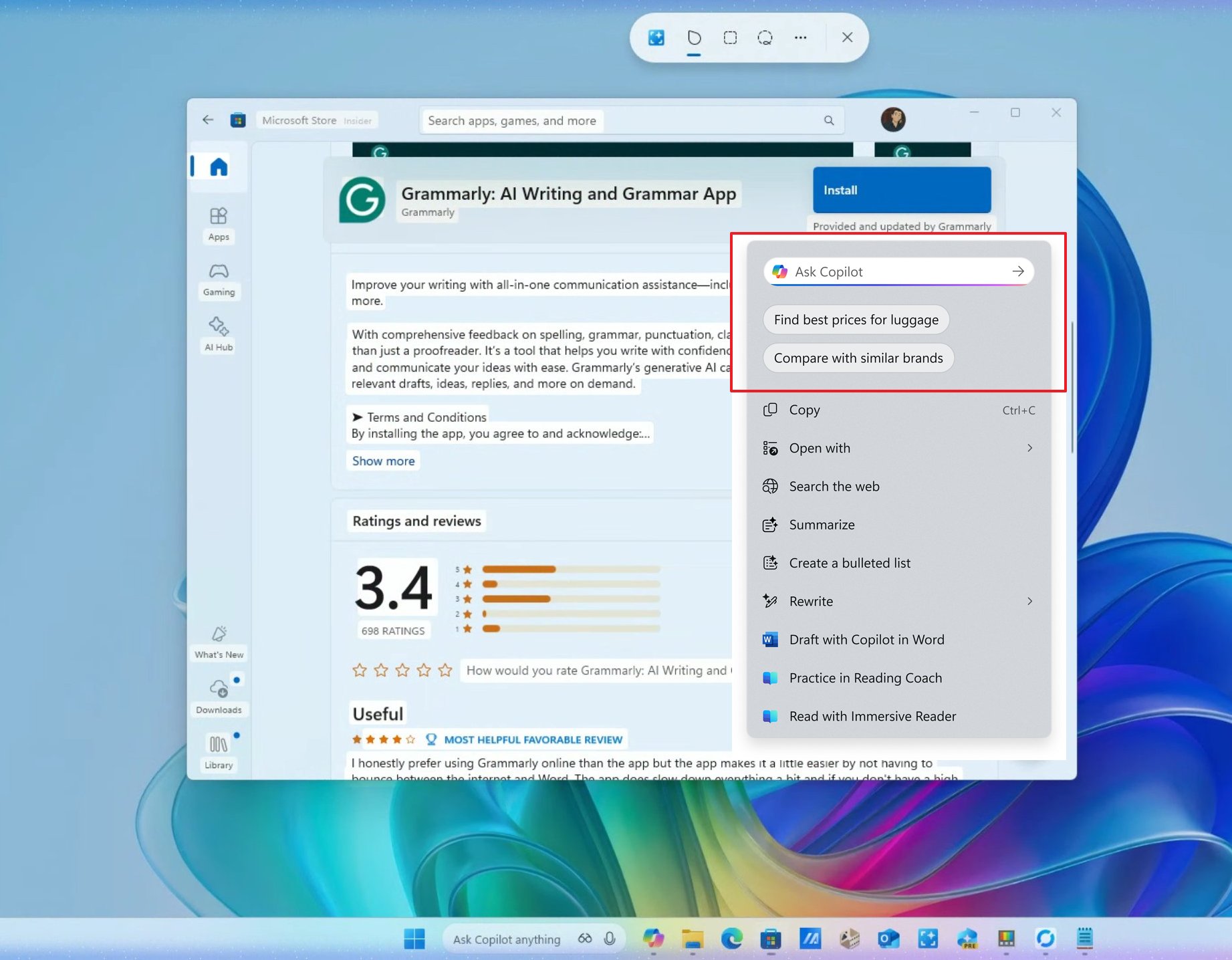
In addition, underneath the prompt box, the feature will now display prompt suggestions using the Phi-Silica on-device model, depending on the content selection.
Furthermore, if you're selecting text in a different language from the system default, then Copilot will also suggest translating the selected text.
Click to Do with conversion
Also, when hovering over a number with its unit, Click to Do will provide the unit conversion. This feature supports conversions for length, area, volume, weight, temperature, and speed.
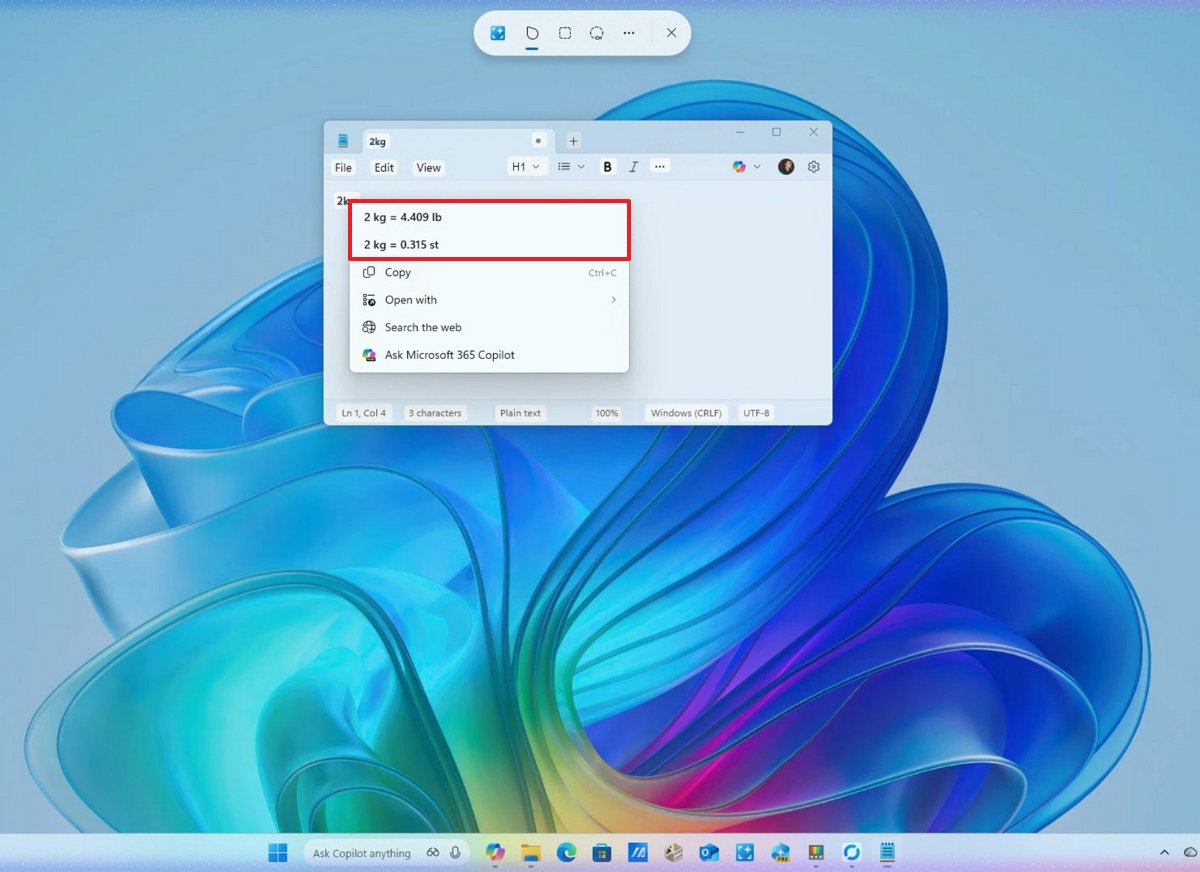
Click to Do Live Personal cards
Finally, if the snapshot includes information about someone in your company, if you press the "Windows key + Click" keyboard shortcut, Click to Do with be able to show a Live Personal card with the person's information.

Open Click to Do as a feature
To open Click to Do inside the Windows Recall app, use these options:
- Open Start.
- Search for Windows Recall and click the top result to open the app.
- Choose the snapshot from the timeline.
- Click the "Show Click to Do" button to make the feature available.
- (Optional) Click the "Hide Click to Do" button to turn off the feature inside Recall.
- Select and right-click the text or object to access the Click to Do AI actions.
Once you complete the steps, you can select and right-click some text or an object to access the same AI actions as when using Click to Do as a standalone app.
More resources
Find in-depth guides, troubleshooting tips, and the latest updates on Windows 11 and 10 here:
- Windows 11 on Windows Central — All you need to know
- Windows 10 on Windows Central — All you need to know

Follow Windows Central on Google News to keep our latest news, insights, and features at the top of your feeds!

Mauro Huculak has been a Windows How-To Expert contributor for WindowsCentral.com for nearly a decade and has over 22 years of combined experience in IT and technical writing. He holds various professional certifications from Microsoft, Cisco, VMware, and CompTIA and has been recognized as a Microsoft MVP for many years.
You must confirm your public display name before commenting
Please logout and then login again, you will then be prompted to enter your display name.
